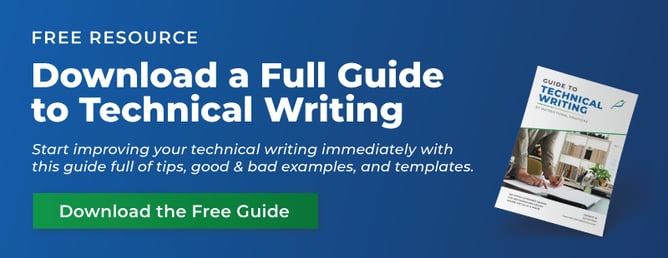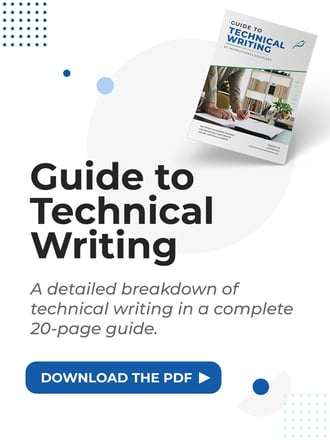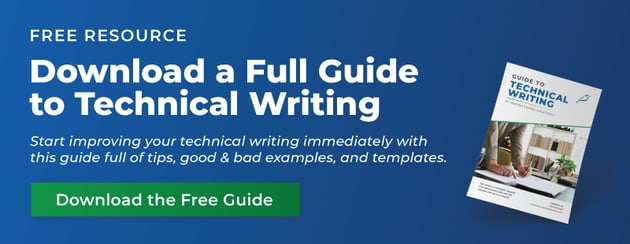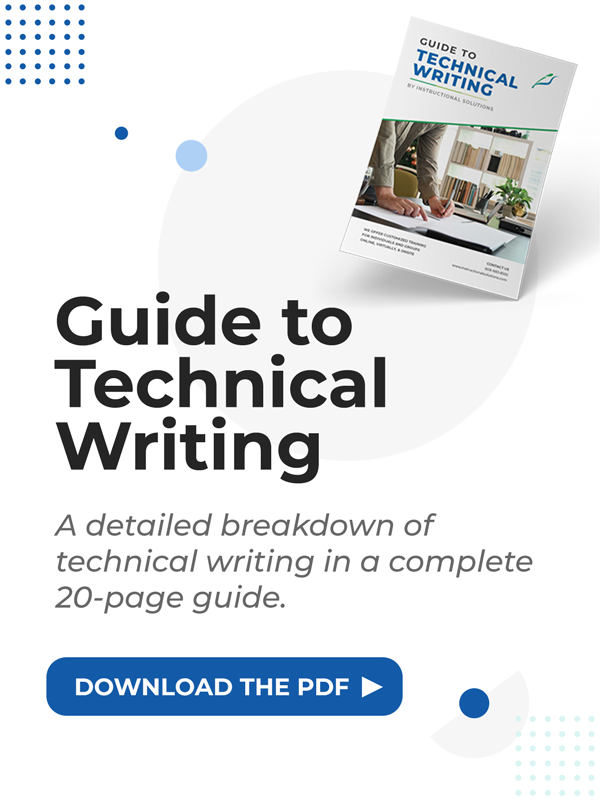How to Become a Technical Writer: A Beginner’s Guide
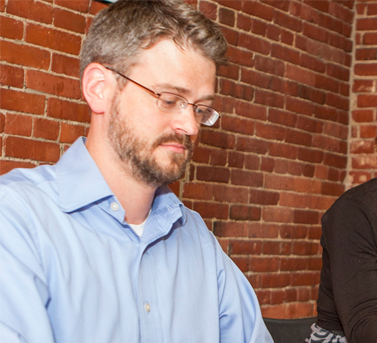
Originally published May 18, 2021, updated March 7, 2024
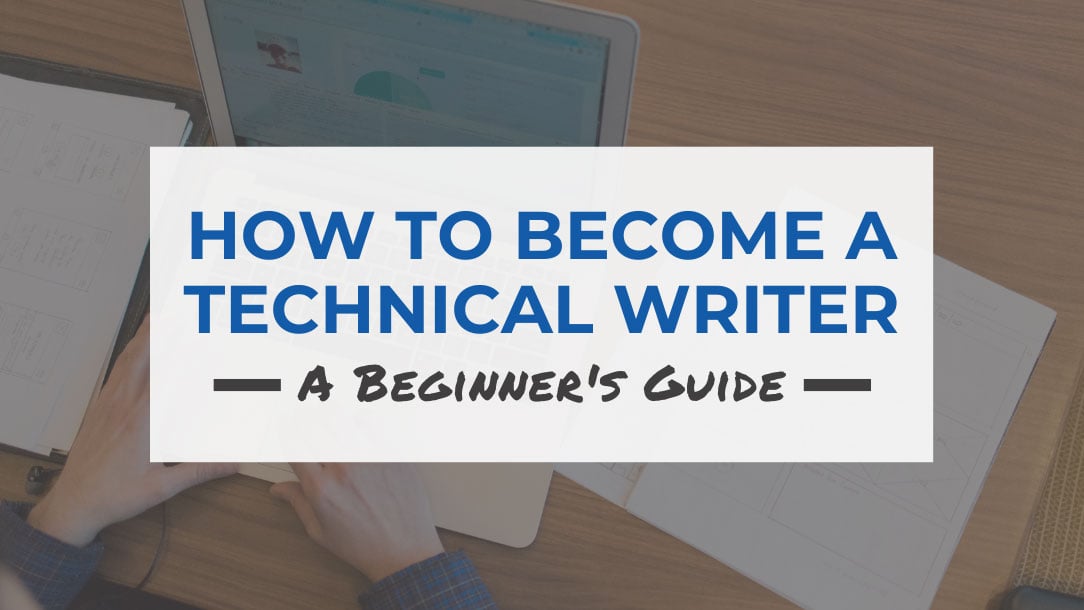
Table of Contents
Technical writing is a highly valuable skill. It is crucial for anyone working in a tech-related business, for engineers and scientists communicating their technical knowledge, and for people looking for rewarding, full-time work as writers.
So, what is involved in technical writing, and how can you become a technical writer?
Technical writing is broadly defined as any type of text that aims to explain detailed information. A technical writer communicates in a way that presents technical information so that the reader can use that information for an intended purpose, such as computer applications, medical procedures, or environmental regulations.
Technical writing is not just about understanding technical information and recording it in a document. Technical writing takes high-level information and processes it into digestible content for a specific audience. This article will outline and define the technical writing process, best practices, and steps to launch your technical writing career.
What is technical writing?
- Communicating about technical or specialized topics, such as computer applications, medical procedures, or environmental regulations.
- Communicating by using technology, such as web pages, help files, or social media sites.
- Providing instructions about how to do something, regardless of how technical the task is or even if technology is used to create or distribute that communication.”
This writing style covers any type of text that aims to explain detailed information. A technical writer communicates in a way that presents technical information so that the reader can use that information for an intended purpose.
Learn technical writing with our online self-paced course.
Our practicum technical writing course has been taken by high-level technical writers at Shell, Boeing, and more.
Download the OutlineStyle definition
Technical documentation has a clear, direct, and neutral style. The text should present the information in the most professional and accessible way possible.
Role
Technical writing is used anytime a technical subject must be conveyed by text. The technical content will explain the scientific or specialized details and guide the reader in how to use that information. Due to the high-tech nature of workplaces and day-to-day life, technical writing is increasingly common.
Benefits
Technical writers have the great benefit of becoming lifelong learners. In order to communicate the content, you must be (or become) well-versed in that field. Therefore, with each new technical document, you will become an expert on that subject.
While the reader does not need to know all the details, you need to have a depth of knowledge to select just the crucial elements to include. A broad understanding will ensure that the text is accurate and communicates the necessary data most efficiently.
Growing demand
Prominent technical writing areas
There are many professions that require strong technical writing, such as financial services, manufacturing, energy, consulting, medical business, and engineering.
Technical writing isn't limited to these domains. In the information age, being able to provide clear instructions or information for the intended audience is more important than ever in a variety of industries. Technical writers work in software development, consulting, academia, government, broadcasting, transportation, energy, telecommunications, health, security, publishing, and the list could go on.
The technical writing process
It may surprise you to discover that the technical writing process can take just as much (or more!) time to plan and review than to write. The planning phase sets you up for success and makes your writing time more effective. The review phase is essential to ensure your document is technically accurate and audience-accessible.
Before you start to type one word, there are crucial preparation steps that will define your document. If you start writing and then try to edit your way into a usable technical document, you will only cause yourself headaches. Start smart by preparing first.
Use the following technical writing process to develop your documents best.
1. Project preparation
The project planning process begins when the technical document is requested. This step may be initiated by an employer, colleague, or client. (For ease of reading, the person who requested the document will be referred to simply as the client in this guide.) With the request, the initial requirements are defined: document type, subject area/content, goal, scope, and audience.
Not all of these important aspects may be clearly defined at first. Sometimes, your client might not even be sure of their own requirements! A guided conversation about the document is invaluable to ensure that you as the author understand the project. Through thoughtful questions, you can pull out this information, so the project is clear and well-planned from the start.
2. Audience analysis
After the initial project planning with the client, the biggest writing factor is the audience.
The target audience is always at the forefront of the technical writer's mind. The reader defines the text. Generally, the technical information does not change. The only thing that changes is how those facts are conveyed. A good technical writer revises the text based on the reader's context.
3. Understand the user
In order to know who you are writing for, you have to gather as much information as possible about who will use the document. It is important to know if your audience holds expertise in the field, if the topic is totally new to them, or if they fall somewhere in between.
The audience will also have their own expectations and needs. You must determine what the reader is looking for when they begin to read the document. The reader's goal will guide the entire writing process, as the document should fill their needs and answer their questions.
For example, if you are writing a financial proposal for a pilot R&D program to control home heating from a smartphone remotely, your audience might be an executive deciding the next year's company budget. In order to properly prepare the technical proposal, you need to know the executive's knowledge levels of the research area. In addition, it would be beneficial to know his or her top financial concerns, the business factors that are normally used in decision-making, and the timeline.
This executive audience is totally different than the end-user of that remotely controlled home heating program. Perhaps the R&D produces new software to control home heating from a smartphone remotely. The audience, in this case, is reading the software user manual. As the writer, you need to understand what the average, unfamiliar user of this software knows about using their smartphone and their home heating system. You need to know their initial questions, the likely problems, and the most effective solutions in order to write a useful document.
These examples share the same technical information. However, they have two very different audiences and therefore produce two very different documents.
- Who are they?
- What do they need?
- Where will they be reading?
- When will they be reading?
- Why will they be reading?
- How will they be reading?
Once you've answered these questions, only then can you start to prepare the document.
4. User experience
User experience is just as important in a technical document as it is for a web shop's mobile usability.
Now that you know your audience and their needs, keep in mind how the document itself services their needs. There can be a tendency for experts to craft a document that shows their depth of knowledge and to compile it in a way that is appealing to their own peer group. It's an easy mistake that ignores how the actual reader will use the document.
As you prepare, continuously step back and view the document as the reader. Ask yourself: Is it accessible? How would they be using it? When will they be using it? Is it easy to navigate?
Always write a document that is useful to the user.
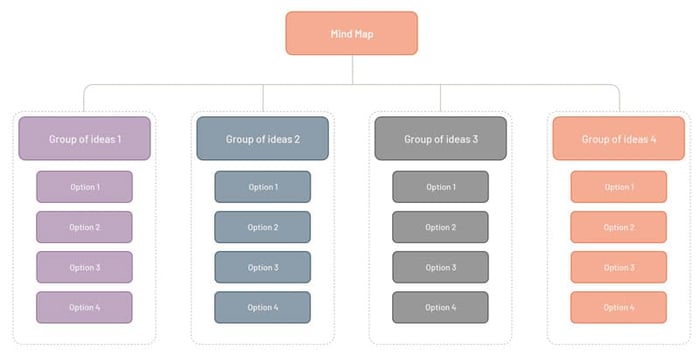 Planning your document
Planning your document
With the document request and audience clearly defined, you can then conceptualize your document.
This phase will also highlight areas that are not familiar to you and require more investigation. Highlight any topic areas that you need to research before writing.
Consulting with experts
No technical writer knows every technical detail.
Consultation with specialists is critical. Experts will provide additional or parallel information that will make the information more useful to the end reader. They may be colleagues, client contacts, or external experts who are authorities on your topic.
Engage with subject matter experts early in the process. Maintain contact throughout because they can add value at different stages, especially during the review.
Document preparation
After the mind map is prepared, it is important to choose the right type of technical document. Your client may have already indicated the desired type, or it may be obvious. However, it's worthwhile to step back at this stage and confirm the document type. There is a wide range of types. This list isn't exhaustive, but provides an overview of the major ones:
1. Technical reports
Technical reports are written to provide information, analysis, instructions and/or recommendations. These reports provide the reader with enough background on a topic to be informed and potentially make decisions.
Example: a technical report on one phase of a company's manufacturing process. The report includes information on how this phase impacts the product, the process itself, and recommendations for optimization.
2. Technical manuals
Technical manuals provide instructions on how to use a device or program. The reader is the user or sometimes a developer of that product.
Examples: user manual for a vehicle; instruction manual for an alarm clock; developer's manual for a computer program.
3. Emails
Emails are a brief form of communication, which vary depending on the goal. Generally, they intend to share information, with potential additional use to persuade or instruct.
Example: an email written to all employees with an update on human resource policy changes.
4. Technical proposals
Technical proposals provide an introduction to a new project. It describes the purpose, the planned phases or tasks, methods to be employed, expected results and benefits, and a budget. A proposal acts as an outline for the project if accepted. Proposals do not necessarily need to have a budget, as they may propose cost-free changes.
Examples: a technical proposal from a franchisee to a retail company to open a new location. The proposal includes real estate details, renovation, and operations plans, revenue expectations, and project costs.
5. Specifications
Specifications are a detailed outline of the structure, design, materials, packaging, and standards of a product or process with a level of detail that allows an external party to construct or reconstruct it.
Example: an architect provides specifications for the construction of a house to a building contractor.
6. Technical specification datasheets
Technical specification data sheets provide the technical features, and characteristics with a level of detail that allows an external party to include them within another system.
Example: a computer manufacturer provides a technical specification datasheet for a personal computer with detailed information on its operating system, ports, and compatibility so that a customer can connect the computer to their company's network.
7. Guides and handbooks
Guides and handbooks are references or sets of instructions in a form that is quickly accessible. For example, consider a user guide for assembling a new bookshelf.
MLA Handbook provides a quick reference guide for a defined research writing style.
8. Standard Operating Procedure
Example: laboratory employees use a standard operating procedure to complete potable water analysis.
Learn how to create any type of technical documentation in our Technical Writing Foundations course.
 Writing in the correct style
Writing in the correct style
At long last, you can start to write! By going through this thoughtful planning process, writing will be easier and more efficient.
While the content will now be clear, you need to ensure the style of writing is suitable for a technical document. The writing needs to be accessible, direct, and professional. Flowery or emotional text is not welcome in a technical document. To ensure your text maintains this style, integrate the following key technical characteristics into your writing:
Active voice
The active voice is easier to read and understand than the passive voice. Whenever possible, choose the active voice in your sentences. In active voice, the subject of the sentence is the doer of the action.
Accurate word choice
Choose your words thoughtfully. Use the best word for the context. Include necessary details that make the text understandable and precise. Avoid overusing pronouns such as ‘it' and ‘this' as the reader may have difficulty identifying the antecedent.
Many technical documents provide instructions to the reader. Therefore, a task-based approach makes the content easier to understand. When writing, consider the order of the steps in the process. This flow provides a natural guide to your writing.
Sentence structure
Be brief. Combine sentences or eliminate unnecessary words in sentences to make the text as concise as possible. Technical writing must be clear and direct, so there is no need to add color or complexity.
Jargon is a trap for a technical writer. If you're an expert in your field, it can be easy to use jargon familiar to your topic or office, without realizing that it may be confusing to other readers. A non-expert may use jargon as an ill-intentioned effort to appeal to experts. Don't fall for this trap. Jargon should be avoided and only used when appropriate for specific audiences.
When using unfamiliar or technical terms, define the term when used for the first time in the text. When using abbreviations, write out the complete term followed by the abbreviation in parentheses for its first use. These definitions act as in-text reference points for the unfamiliar reader.
Using fewer words or more basic versions of words will communicate the same meaning to your reader while being more accessible.
Example: At the present time, our research focuses on the utilization of the drug to eliminate measles completely.
Improved: At present, our research focuses on the use of the drug to eliminate measles.
Visual formatting
While the heart of a technical document is its text, the visual display should not be forgotten. A wall of text is difficult to read. Even the clearest instructions can be lost in a document that has poor visual representation.
Thoughtful formatting, templates, and images/diagrams will make your text more helpful for your audience.
Clarity in formatting
The style of the technical document carries over to the formatting stage. The formatting should be clean and professional. Well-chosen, readable fonts, sizing, and layout will assist the reader in understanding the text. Larger documents should consider a table of contents, sections, and the inclusion of appendices to best structure the information.
Templates
Many companies and individual technical writers rely on templates for technical documents. Templates should be developed for clarity and with the audience in mind. Once developed, templates save time and provide a previously approved style guide. For repeat projects, developing a template (or asking if your client has a preferred template) can be beneficial.
Enhance with appropriate graphics
They say a picture is worth a thousand words. This phrase rings true even in technical writing. However, not just any image is worthy of a technical document.
Technical information can be difficult to convey in text alone. A well-placed image or diagram can assist the writer's explanation. The image should be directly relevant and be clearly referenced in both the text and in an explanatory caption.
Images used for decorative purposes should never be used within a technical document. They are distracting and do not maintain a clear, neutral style.
Review carefully
Good writing of any type must be free of spelling and grammar errors. It's obvious but not always easy, especially with lengthy documents.
Don't worry – you're not on your own. There are a number of software tools that can assist in your grammatical review. The two most useful tools we suggest are:
- Microsoft Word Spelling and Grammar with the Readability Measurement
- Grammarly
We recommend running your text through both of these programs to double-check your text's correctness.
These checks should be run first, followed by a thorough review with your own eyes. Software cannot grasp all contexts or inconsistencies. In this review, reading potentially challenging passages aloud will test if they are accessible or awkward.
Technical review
Once the text is linguistically correct, you'll need to ensure it's also technically correct. Step back from the document and return to it in the mindset of the intended audience. If your document is a user manual, use the instructions to operate the product. If your document is a new business proposal, read it as your client with their priorities in mind.
Review cycle
With your personal review complete, the document should be reviewed by others. The reviewer could be a peer, a supervisor, or a subject matter expert.
This review cycle will vary depending on the company or client. A common process follows a first draft, revised draft, and final draft/version of the document. Each review will refine and improve the document. Therefore, a lengthier or more critical document will require additional rounds of review.
This review process is also valuable to you as a technical writer. External feedback will improve not only the current text but also your writing in the future.
Good writing is a process. Reviewing, revising, and editing should not be afterthoughts, but carefully included steps in your technical writing work.
- Start your Technical Writing Journey
- Build Your Portfolio
- Refine your CV
A CV is a technical document. There is no better place to start applying your technical writing skills. Follow the style guidelines for technical writing and highlight your career and accomplishments.
Career Advice for Technical Writers
Do you need a college degree in technical writing?
No! While there are many valuable formal education programs in this discipline, there are no direct requirements for a college degree or diploma. Practical experience and a writing portfolio will be just as useful to winning jobs or impressing employers.
Just start writing
Don't wait for your first technical writing assignment to build your portfolio. Practice this style by creating new documents for existing programs or projects.
Is there a productivity app that you love to use, but its documentation is poorly written? Write your own and share it online for feedback. Has your office been dreading the preparation of the annual office health and safety report? Practice your technical writing skills to prepare this report while becoming the office hero.
Each of these documents will make an excellent addition to your technical writer's portfolio.
Know what you are worth
As this field is growing, there is more information about its earning potential. When you plan your freelance contracts or your annual review, it's important to know the value of a technical writer.
US Department of Labor reports that the average salary for a technical writer in the US in 2020 was $74,650 per year or $35.89 per hour. According to Salary.com, the average salary for a Senior Technical Writer ranges from $80,800 to $98,200 with an average base salary of $89,200.
Focus on your niche
Most technical writers chose a focus area for their work. The more you define your niche, the clearer your ideal client or employer will be.
Choosing an industry is an important first selection step. The technical documents in finance are quite different than those in pharmaceuticals or tourism. It is possible to write for multiple industries, but you will be most effective if you select a field that suits your interests and your experience.
Freelance vs. in-house technical writing
Technical writers can be either independent freelancers or in-house employees.
Freelancer writers work for a range of clients to prepare their technical documents. As a freelancer, you can choose your clients and subject areas. In addition, freelancers are in charge of their own businesses and working hours. With a growing need for technical writing and online freelance platforms, there are lots of contracts available for both new and experienced freelancers.
In-house employees provide their technical skills to one company either as a full-time technical writer or as technical staff with writing responsibilities. Full-time technical writers work with subject matter experts in the company to develop a range of required documents. Companies generally prefer that in-house employees have technical writing skills because those employees often know the technical details better than anyone else. They are the subject matter experts! The ability to communicate this expertise in writing is very desirable to employers.
There is a big advantage for technical employees, such as engineers and analysts, to add technical writing to their skillset. Communication is a challenge for many companies. It is difficult to make the best business decisions without clearly communicated information from the technical departments. An employee who can bridge the gap between technical and business will be of great value in most companies.
Where to look for technical writing jobs
As a freelance writer, technical writing jobs can be found on a number of online platforms. The most popular include:
- Upwork
- Remoteok.io
Of course, your professional network is likely a good source of technical writing opportunities.
As an in-house employee, discuss your interest with your supervisor and offer your writing skills during project planning meetings.
Continuing education
Technical writers are always learning. By diving into new subject areas and receiving external feedback, a good writer never stops honing their craft.
Of course, good writers are also voracious readers. No, technical documents don't make very exciting reading, but by reviewing highly-read or highly-used documents, your own writing will improve.
Join a professional association
Receive instructor feedback on your actual writing in an online self-paced technical writing course.
Learn moreFinal thoughts
Technical writing is a prized and profitable skill. It is a valuable title whether you are interested in making a career shift to a technical field or adding this ability to your current role. Remember, any employee who can convey technical information at work is very valuable to a company. Skill in technical writing is a real career boost.
To become proficient in technical writing, follow this guide to start planning, writing, and reviewing. Becoming a good technical writer is not an overnight process, but a rewarding investment into your communication skills and career.

